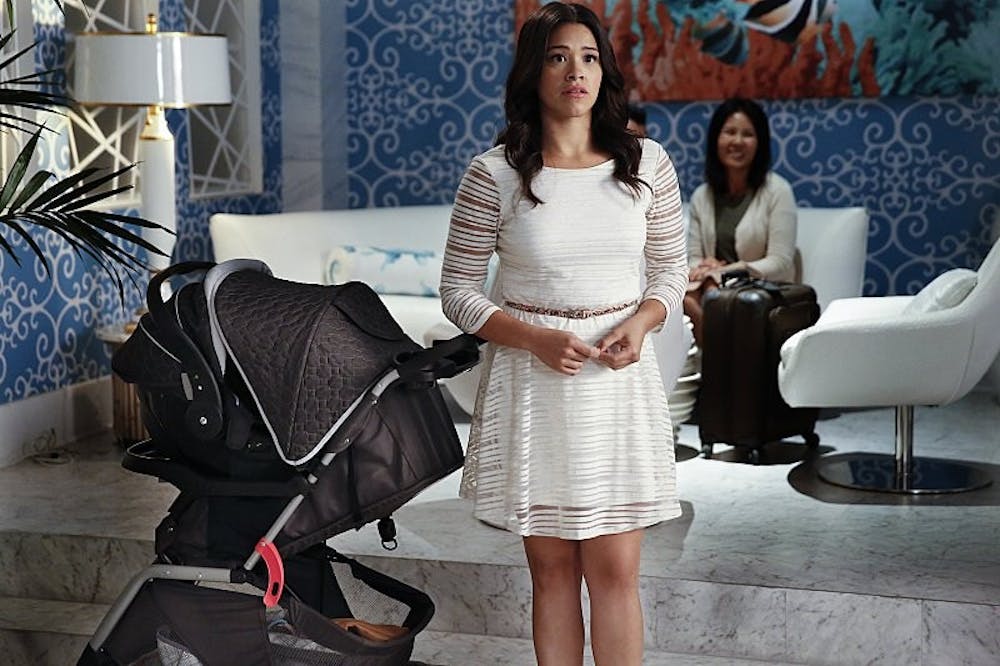Growing up Mexican-American, I spent several years of my young life hearing my grandfathers belt out old Mexican love songs, listening to my aunts and uncles share stories about family trips to Mexico and absorbing sporadic Spanish conversations.
I loved experiencing my heritage, and often dreamt of the day I'd turn on the TV and see those experiences reflected on my screen. I rarely did.
I'm not the only one who has felt this way.
"Latinxs fall into the same place as any minority," said Andres Torres, a professor in the school of film, dance and theater. "You feel like every year it's going to get better and then it just doesn’t. ... You just don’t run into many brown faces as you get higher and higher in the media world."
And when the "brown faces" do appear, many professionals agree that the roles lack specificity and do not adequately display the complex diversity of the various cultural groups that fall under the "Latinx" category. Moreover, Latinxs' myriad roles in society are not well-documented on the silver screen.
Torres said he is currently working on the plot for a TV show that would showcase Latinxs' growing political influence in America.
"It would be showing the Latinx community and using the political power and charisma of a young Latino leader gaining more and more power as he moves up," Torres explained. "It would mirror the rising power of Latinos in politics, and I think that would be very interesting."
Political influence is a significant part of the story of Latinxs in America, especially since recent studies show they will compose 12 percent of U.S. voters this year. But casting for television shows often deprives Latinx actors of the ability to tell their own story, political or otherwise.
To further illustrate this concept, Torres mentioned the recent controversy surrounding the upcoming show "American Drug Lord," in which white British actor Charlie Hunnam of "Sons of Anarchy" is set to play the role of the Mexican-American drug lord known as "La Barbie."
Michelle Martinez, an instructor of film and media studies and transborder studies, said that most Latinx roles on television still lack nuanced depictions of Latinx identity. She said accents and dialects are a clear example of this lack of nuance.
"The argument has been made many times that you wouldn’t get an Irish actor to play an Australian guy," she explained. "And you wouldn’t pass off a Southern accent as an accent from Boston. ... But it seems to be OK to present a Nuyorican as Southwestern Chicano."
Beyond the accent is an inaccurate depiction of other linguistic specificities, such as regional slang. Martinez noted the roles of Jane, Xiomara and Alba Villanueva on "Jane the Virgin" as an example of this; the characters are Venezuelan, but all three actresses are Puerto Rican.
Martinez said she noticed the actresses use distinctly Puerto Rican greetings on the show, something English-speaking audiences might not notice, but viewers of Puerto Rican and Venezuelan descent could easily pick up on.
However, Jane the Virgin and shows like it are not completely failing as a whole.
"Because we’re still so rarely represented, each time a show comes out, it’s making a step further in the right direction," Martinez said. "But there are so many directions to come from that it can be hard to navigate."
She said "Jane the Virgin" is doing a good job in other aspects of specificity, including the fact that it "shows a Latinx world that Anglos are a part of instead of the other way around."
Moreover, Martinez said it showcases many different phases of multilingualism and shows positive examples of bilingual characters on English television. She praised the fact that the grandmother, played by actress Ivonne Coll, is a confident Spanish speaker on an English-language show. This differs from other bilingual characters on TV in which Spanish is "sped up and reactionary," like the character of Gloria on Modern Family.
"(Jane the Virgin) allows that Spanish-speaking character to speak with dignity," Martinez said.
She said she also appreciates the animated show "Bordertown," which features Lalo Alcaraz and Gustavo Arellano as consulting writers.
"The show is calling out more politicized and controversial aspects of the 'Mexiphobia,' policy and attitudes towards Latinxs in America," she explained. "It's little more biting and political, which is fresh."
She also said she likes the premise and casting in "Shades of Blue," a cop show in which Jennifer Lopez stars and serves as executive producer.
However, Martinez noted that Lopez is already famous.
"We still keep relying on performers that already have obtained major fame instead of bringing new talent to the top," she said.
However, context is just as important as content when it comes to Latinx representation on television. Martinez mentioned she loved Carlos Valdes' sharp, witty character of Cisco Ramon in 'The Flash,' but wished the show would put Ramon in a Latinx community.
Martinez added that she is currently working on a show idea of her own, which will show diverse Latinxs with a variety of jobs, incomes and power positions in integrated communities.
"(Latinx) lives aren't all telenovelas or magical realism," she explained. "Sometimes, every life has a little bite of magical realism and melodrama, but I want to show a more nuanced depiction of Latinos in the U.S."
Eileen Diaz McConnell is an associate professor in the school of transborder studies who has conducted in-depth research about Latinx representation in the media and found that, ultimately, there is much work to be done. She added that homogenization of Latinxs in mainstream media is still rampant.
"Given the diversity and growth of Latinos in the U.S., media representation everywhere needs to expand," she said.
Reach the reporter at celina.jimenez@asu.edu or follow @lina_lauren on Twitter.
Like The State Press on Facebook and follow @statepress on Twitter.




